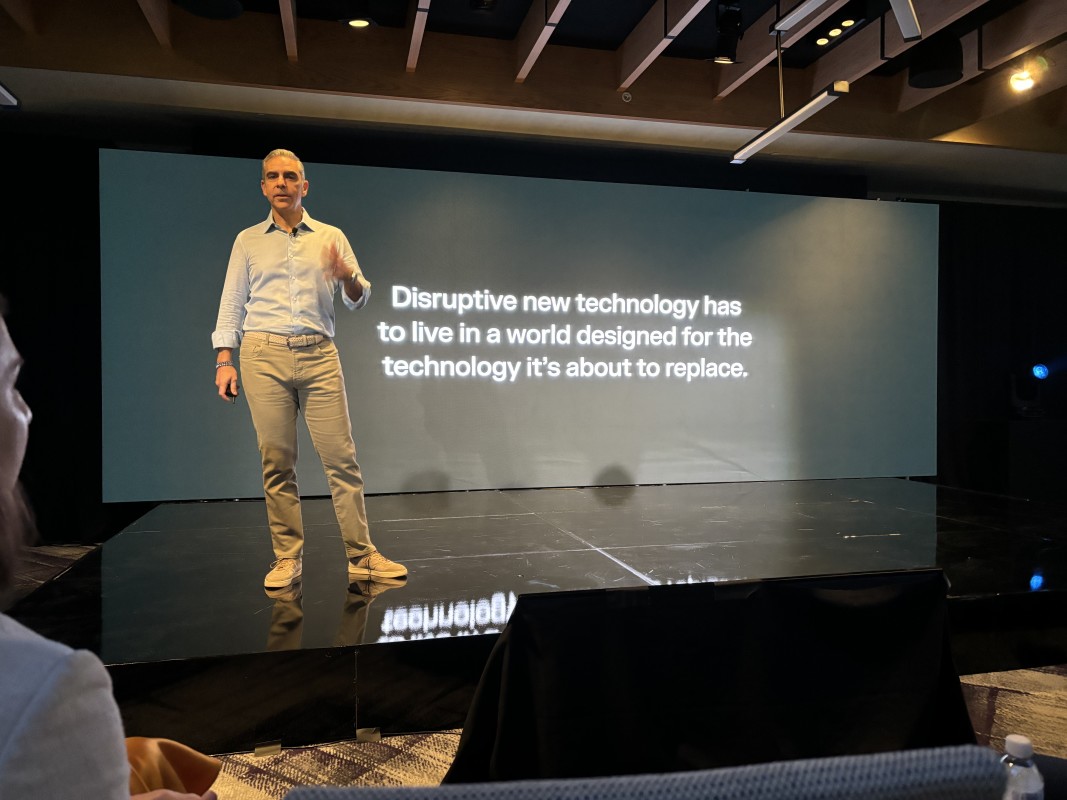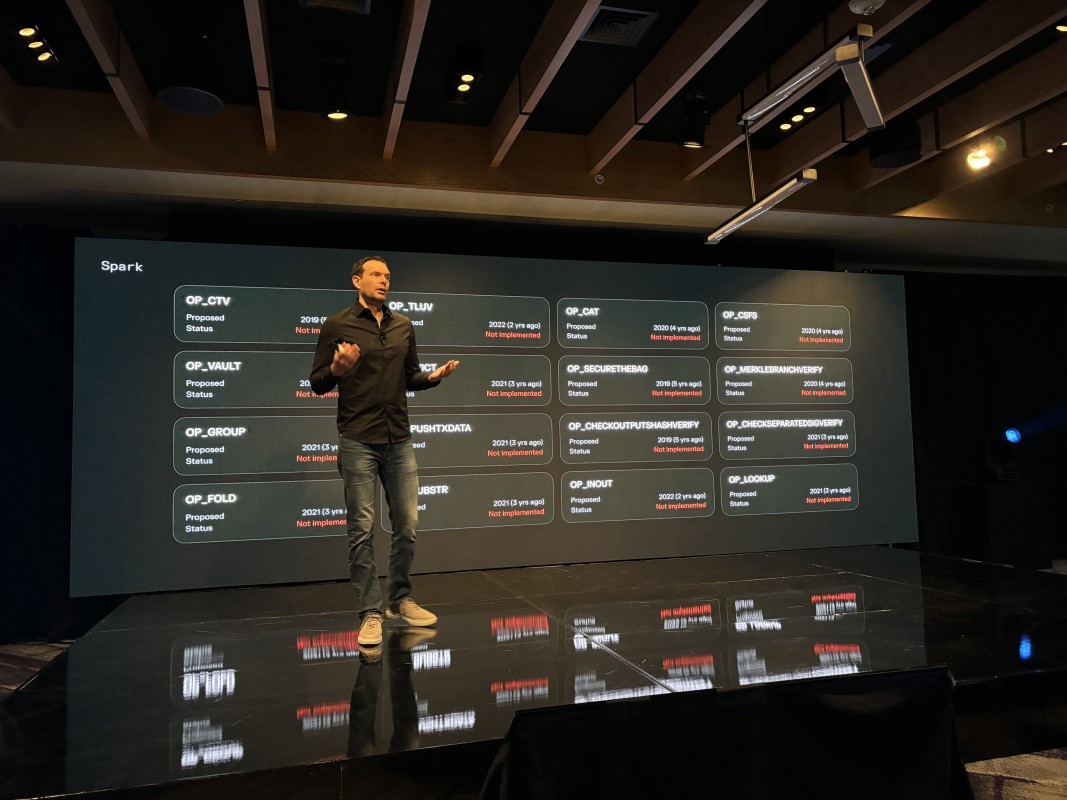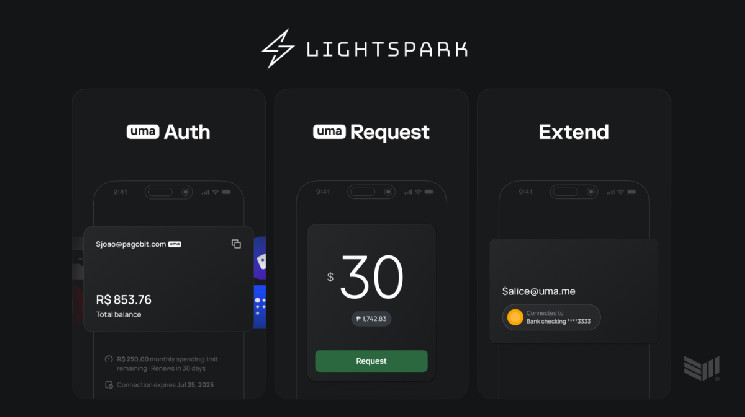At Lightspark Sync, Lightspark’s first partner summit on Thursday, the company announced new products and features that will allow users to make global payments with both bitcoin and fiat.
The company announced that it has launched an alpha version of Spark, a Bitcoin Layer 2 that’s interoperable with Lightning and that makes it cheaper to onboard users to a non-custodial Bitcoin layer.
The company also announced new capabilities for UMA, the company’s open-source and regulatory compliant payment solution that makes sending money as simple as sending an email.
With UMA Extend, the Lightning Network can serve as a bridge between traditional banks globally, while with UMA Auth and UMA Request, UMA users can tip, pay subscription fees and make payments to merchants within apps.

Spark — Lightspark’s Bitcoin Layer 2
Spark is a Layer 2 protocol for Bitcoin that leverages statechain technology. In short, users can hold fractions of bitcoin off-chain, and transfer these by sending private keys to other users (rather than signing transactions with the keys).
Lightspark created Spark to better support the onboarding of users to the Lightning Network, which normally requires an on-chain transaction for each payment channel as well as the locking up of some amount of bitcoin in these channels so users can send and receive transactions.
The layer 2 was primarily borne from the frustration that the Lightspark team encountered in trying to create a non-custodial Lightning wallet for users.
“Self-custodial Lightning wallets, especially at scale, just aren’t viable,” Lightspark CTO Kevin Hurley told Bitcoin Magazine.
“If you are opening channels for billions of users, fees are going to go through the roof, and you're going to fill up block space. It's just something that's not going to be reasonable and you lock up liquidity for every single user,” he added.
Hurley also shared that Lightspark didn’t want to wait for the enabling of Bitcoin opcodes (like CheckTemplateVerify or TapleafUpdateVerify) that would make it cheaper to open new Lightning channels. Lightspark wanted to offer users a non-custodial option immediately.
So, they built Spark, a Bitcoin Layer 2 that offers users cheap, instant payments as well as a permissionless, unilateral exit to the Bitcoin base layer. It also enables offline receive, or the ability to receive bitcoin even when your device isn’t connected to the internet.
Besides statechains, Spark also utilizes atomic swap technology. Its design is similar to that of Mercury Layer in that it enables the off-chain transfer of ownership of Bitcoin UTXOs while benefiting from near instant and fee-free transactions, according to Hurley.
“Mercury has a lot of core limitations that we go beyond,” explained Hurley.
“In Mercury, for example, you can transfer whole UTXOs only. You have absolute time bombs where you have to go back on chain at some absolute time. So, you can only do so many transactions. Also, we pull in different pieces like connector transactions from Ark, for example, but, other than that, we're not similar to Ark at all,” he explained.
“I think it's hard to compare it to something, because it pulls in a lot of different components, and I think the trade-offs that we chose to make are different than many others probably chose to make.”
Besides bitcoin, it’s also possible to issue and use stablecoins on Spark. Or you can issue stablecoins via Taproot assets, LRC-20 or RGB on the base layer and transfer them to Spark.
A unique dimension of Spark, though, is that the assets on the layer 2 are all UMA enabled.
“You can now have non-custodial users sending directly to the bank accounts of UMA Extend users,” said Hurley, mentioning one of the new functionalities of UMA addresses.

UMA Extend
UMA Extend integrates the Lightning Network with traditional banking systems, allowing users to make international bank transfers in seconds. With this new technology, UMA Extend users can send any other UMA Extend user a near instant cross-border payment from one bank to another over Lightning as easily as sending an email.
“It’s designed to facilitate money movement across any currency,” Nicolas Cabrera, VP of Product at Lightspark, told Bitcoin Magazine. “I can be in Brazil sending my local currency, the Brazilian real, to a user based in Europe that wants to receive euros or someone in the US who wants to receive USD.”
The Brazilian reals leave the sender’s bank account, are converted into sats by the bank (or an entity like Zero Hash, if the banks can’t touch crypto), which are then received by the recipient’s bank, which converts it back into euros, USD of whatever currency the recipient holds in their bank account. All of this occurs within 30 seconds or so, a radical shift compared to the two to three days it often takes for international money transfers to settle.
“This is the first time connecting the Lightning Network to traditional banking routes and bank systems,” Cabrera added.
UMA Extend utilizes Real-Time Payments (RTP), which enables real-time payments for federally insured depository institutions in the United States, and comparable services in the other countries in which UMA Extend is available. All banks in the US who use RTP support Extend. Currently, Lightspark’s partners support on- and off-ramps for 44 fiat currencies in over 100 countries.
The traditional financial institutions involved with these transactions will set the fees for the transactions, which tend to range between 0.25% and 0.5% — significantly cheaper than the 6.35% customers often pay to make international remittance payments via traditional financial rails.
Those interested in using UMA Extend can do so via this link.
UMA Auth
At the event, Lightspark also introduced UMA Auth. The technology leverages OAuth (Open Authentication) technology (the backend tech for when a website gives you the option to sign into a third-party app or website with Google or Facebook), an open-standard authorization protocol that provides users with secure access to a website or application.
UMA Auth was built using Nostr Wallet Connect (NWC), a protocol developed by the team at Alby. NWC now supports UMA features like cross-currency transactions and client app registration.
“We wanted to expand the coverage of UMA beyond wallets to applications,” Shreya Vissamsetti, a member of the Lightspark engineering team that works on UMA, told Bitcoin Magazine.
“UMA Auth is a new extension on top of UMA that allows you to integrate payments directly into an application. The idea is that it's a lot like OAuth, but for money,” she added.
“All you have to do is input your UMA address and then we form a connection to your Lightspark wallet straight from the application. That gives the app access to communicate with your wallet and push money in right from the application.”
UMA Auth enables users to do everything from tipping their favorite artists to paying a subscription fee to paying a friend through their preferred messaging app.
“Say I'm listening to Taylor Swift,” began Vissamsetti.
“I can link my UMA account, and if my favorite song is playing, I can just tap a button and send her a super small tip,” she explained.
“Tipping is one of the main uses we’re going after with this product,” said Cabrera. “Lightning is again a good foundation layer for us because it allows for sending small amounts.”
UMA Request
UMA Request is another new dimension of UMA, one that allows any UMA user to request a payment from another UMA user.
Merchants can use UMA Request to request payments via an invoice, which comes in the form of a QR code, for the product sold or service rendered. UMA Request also supports zero-sum invoices, through which invoice recipients can pay whatever amount they’d like.
“Previously with UMA, the sender initiated the payment, but we’ve flipped it around,” said Vissamsetti.
Another standout feature of UMA Request is that it ensures both parties involved in the transaction receive a record of the transaction.
UMA Request makes purchasing items online — especially across borders — easier and cheaper than using credit cards.
Moving Forward
Lightspark’s CEO David Marcus, the former president of PayPal, believes that it’s only a matter of time until more banks and platforms come to adapt new technologies like UMA Extend, UMA Auth and UMA Request.
“At the end of the day, if you build a more efficient network that enables global money movements to move faster, cheaper, in real time 24/7 with no blackout dates, then that's where money is going to flow and the financial system and the ecosystem players are just going to need to adapt to that,” Marcus told Bitcoin Magazine.
Regarding Spark, the Lightspark team is looking for feedback from users on how to improve the product.
“We are going to fully engage with the community,” said Hurley.
“We want to make this completely out in the open, completely open-source. Anyone can audit it, spin up their own versions if they want to,” he added.
“We want this to be a collaborative thing where the community joins in, where they hopefully submit pull requests and help find things that they want to improve.”
Christina Smedley, co-founder and Chief Marketing and Comms Officer at Lightspark, echoed Hurley’s sentiment as she discussed both Spark and UMA’s new functionalities.
“We’re trying to [onboard] the next billion or couple of billion,” Smedley told Bitcoin Magazine, “so it’s really important that what we do is open-source and community-led.”
 bitcoinmagazine.com
bitcoinmagazine.com
